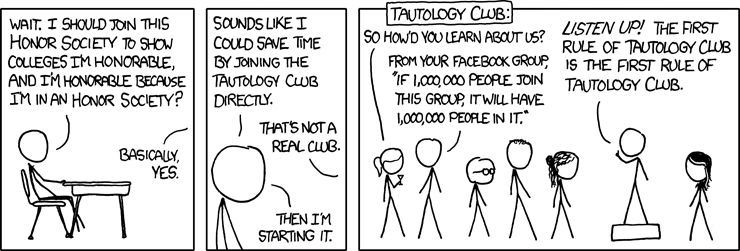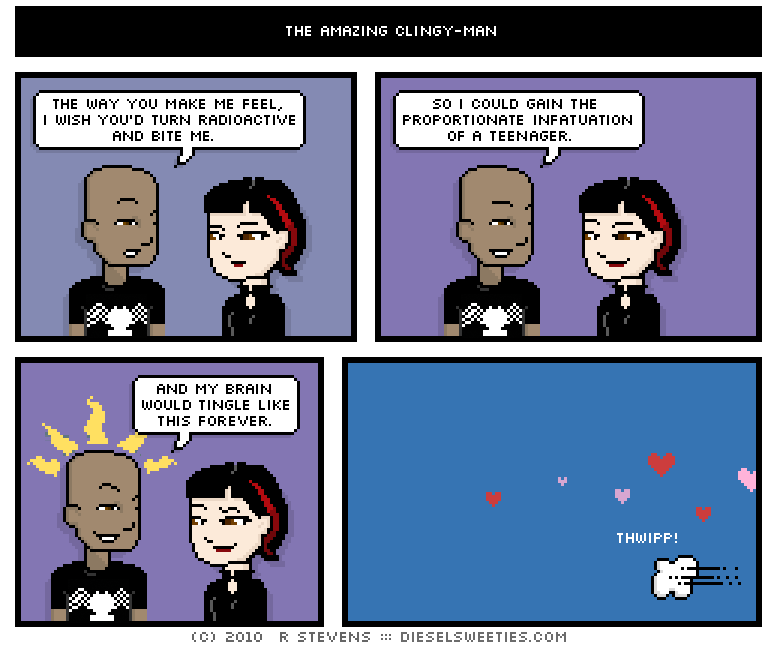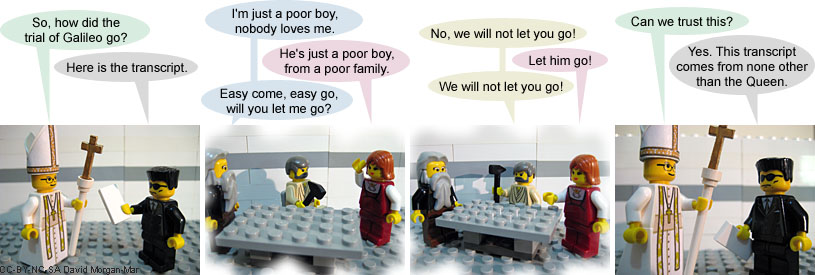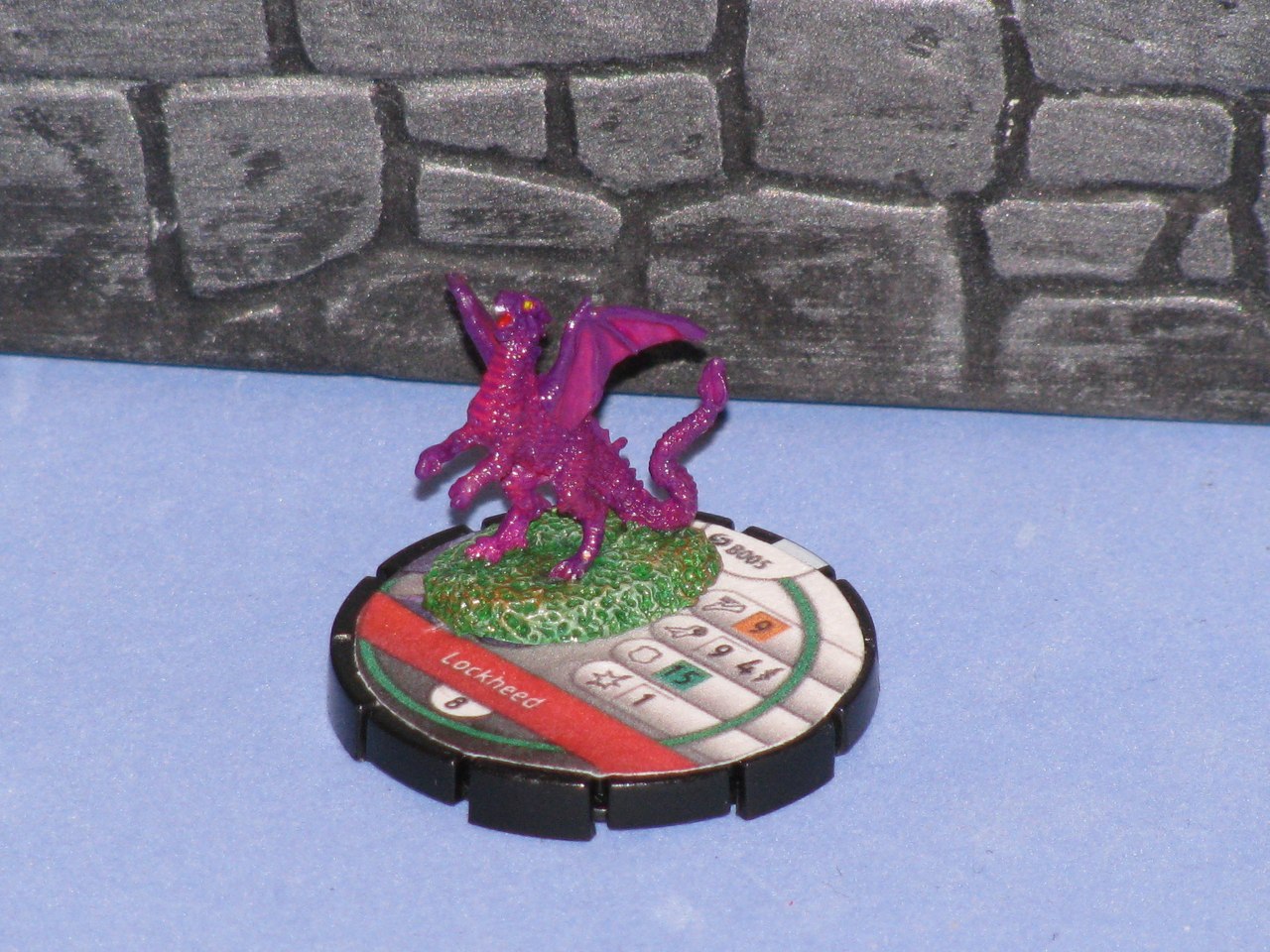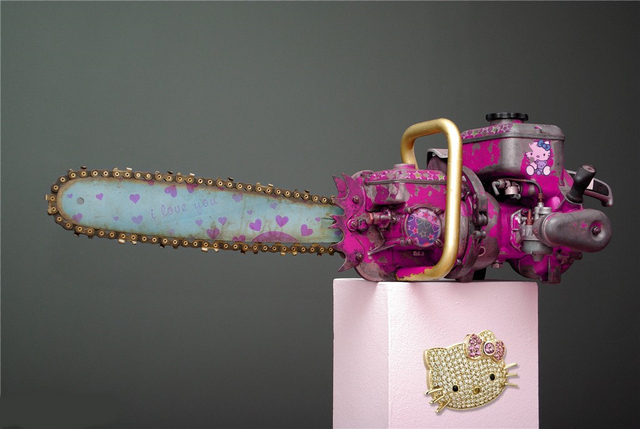“What’s your favorite color, baby? Living Colour!”
comics and animation, dining and cuisine, everyday glory, family and friends, monkeys!, movies and TV, news and info, office antics, science and technology, style No Comments »Friday – 26 February 2010
It’s my 9/80 “on” Friday.
And I’m dealing with an off-site user’s computer issues. Actually, I’m really just on the phone listening while a guy from corporate IT is trying to step him through a possible resolution. But, since I initiated the third-party call, I can’t just hang up. Yay.
Last night was a quiet night in. After work, I picked up my four-color goodness for the week. And I read the books. And it was good. Selah. (Details can be found a little later today over on Four-Color Coverage.)
This morning is bright and sunny, with a little bit of haze. That’s not a bad way to kick off the weekend.
Chew on This: Food for Thought – Black History Month
Our A-to-Z look at Black History closes out with Major General Matthew A. Zimmerman, Jr.
General Zimmerman was the first African-American Chief of the United States Army Chaplain Corps.
Matthew Zimmerman lived a life many children would find difficult to enjoy. Born in Rock Hill in 1941, his father was principal of his school and minister of his church. His mother was his first grade teacher.
“My parents, however, were my inspiration, especially my dad. They taught me spiritual values and the importance of building good relationships.”
Zimmerman graduated as valedictorian from Sims High School in Union County. He entered Benedict College at age 16, graduating with a degree in chemistry and with plans to go to medical school. “At the time I graduated from college, Duke University was offering fellowships to encourage black students to attend their university,” Zimmerman recalls. “I decided to attend Duke and then to go to medical school. Once I started studying at the seminary, though, I decided I wanted to be ordained as a minister.”
Zimmerman became the first African-American student to graduate with a master of divinity degree from Duke University. He was ordained by the National Baptist Convention, Inc., USA and began serving as a campus pastor at universities and colleges throughout the country. Later, he received a master of science degree in guidance and counseling from Long Island University in New York.
In 1967, he entered into military service and was commissioned captain by direct appointment. Shortly after becoming a chaplain, Zimmerman served in Vietnam; he also served in Panama, Grenada and in the Desert Storm campaign. On April 13, 1989, President Bush nominated Zimmerman for promotion to brigadier general. Following confirmation by the United States Senate, he was appointed deputy chief of chaplains of the United States Army. The following year, he was promoted to major general and appointed chief of chaplains, the first African-American to hold this position.
As the chief of chaplains of the US Army, he oversaw 2,800 active duty Reserve and National Guard chaplains and 2,800 chaplain assistants stationed with troops worldwide.
“In the Army there are 92 different denominations represented on active duty by chaplains… We have 39 female chaplains, including a female rabbi. All of our chaplains have to minister to people of all persuasions, but they don’t have to perform a specific event, such as a wedding or other sacraments. However, they are responsible for finding religious personnel to perform specific ceremonies.”
Zimmerman credits his family and years of college ministry in preparing him for working with people of different background. “It is important for students to realize that there are many different cultures. They need to learn to accept people as individuals,” Zimmerman says.
Stray Toasters
- Congratulations to Rachel on her brand-spankin’ new job!
- Taking Black History out of the Peanut Gallery
- Shoes made out of recycled TVs
- Latvian ‘Robin Hood’ hacker leaks bank details to TV
- I need to pick up a few new dress shirts.
- Bright Tastes and Colors of an Indian Spring: Holi Food
- This might be laughable… if it wasn’t so true:
- 10 Blockbusters That Sucked
Yep… Five movies from the lawn dart end of the Cool World-Long Kiss Goodnight Scale are on there. - Spy cameras won’t make us safer


Namaste.








